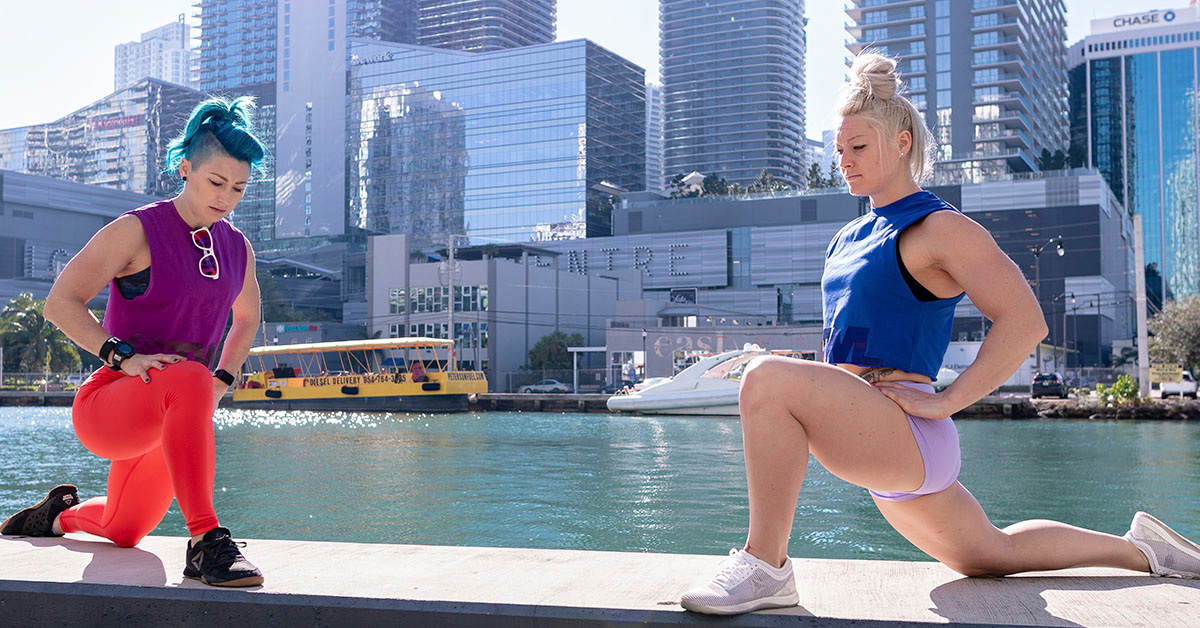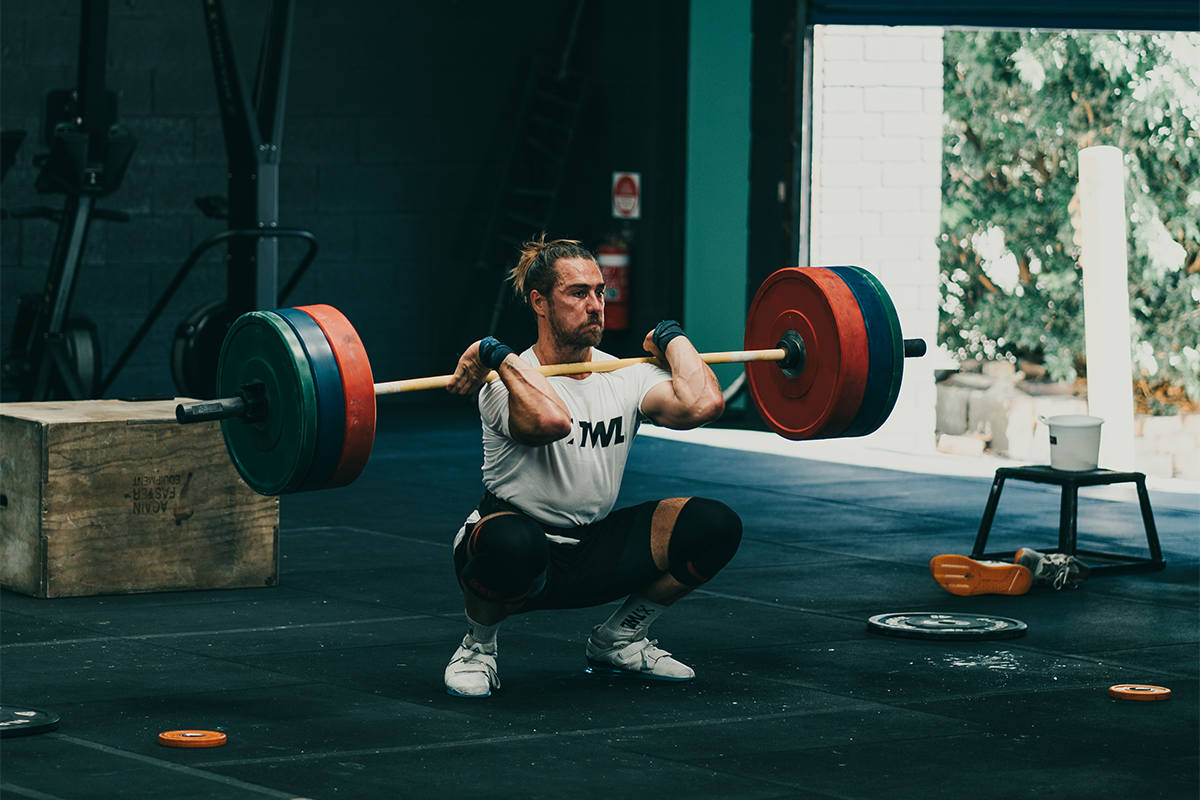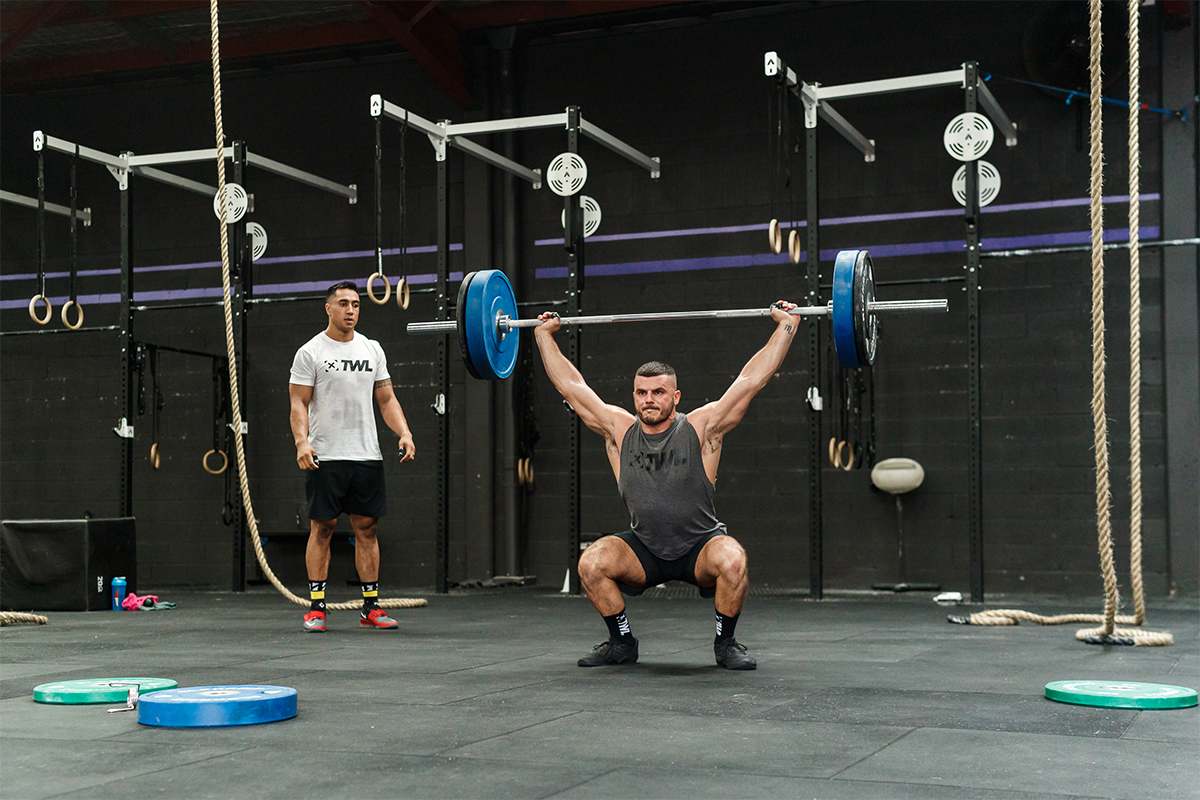“It’s all in the hips” is a common coaching refrain in functional fitness. Almost every compound movement draws power from the hips, whether we’re talking wall balls, burpees, cleans, or kipping pull-ups. So, pain in the hips can set off inner sirens. Should I be working out right now? Is my body falling apart? Am I broken?
We’ve covered hip pain before. Pain requires attention — it’s a signal that something could be wrong. But pain in your hips could be the simple result of weakness in one of the many muscles that affect your hips. If your hips are hurting, here are a few exercises you can try to improve how you feel, and ultimately, how you move.
5 Exercises to Improve Hip Pain
1. Spiderman
What it does: Wakes up tight, immobile muscles
How to do it: Crawl across the floor on your hands and feet, bringing your right foot up to your right shoulder while extending your left hand to the floor above your head and engaging your core. If you don’t have good floor space for crawling, you can do this in place by bringing your foot up to your shoulder and extending your opposite hand, returning to the starting position, and repeating on the opposite side.
2. Monster Walk
What it does: Engages your gluteus medius and gluteus minimus, muscles that are often neglected and fall asleep from all the time we spend sitting at our desks
How to do it: Using a band around your ankles or calves, walk 20-30 yards at a time. On each step, maintain tension in your legs and core, bend slightly at your knees and hips, and bring your foot in to midline before circling it out and planting it at about hip width.
3. Glute Raises
What it does: Engages your sleepy glutes (although, if you tend to have control-freak quads, you may need to focus on squeezing your glutes on extension to make sure your quads don’t take over)
How to do it: Start by doing banded glute raises with both feet on the floor. Your feet should be about hip-width apart, knees bent. Engage your core and lift your hips off the floor until your body forms a straight line from your knees to your shoulders. The band should remind you not to let your knees cave in throughout the movement, so you’ll get more lateral muscle activity.
Make it harder: Remove the band and do single-leg glute raises, with one leg extended and one planted on the floor, or do glute raises with your feet on top of an inflated exercise ball. Both of these more difficult versions require more core engagement and overall stability.
4. Fire Hydrant
What it does: Improves hip stability by engaging lateral hip muscles
How to do it: On the floor on your hands and knees, with your core engaged, raise one leg out to the side and up. Your knee should remain bent throughout the movement. Return your knee to the floor, controlling the movement the whole way. Repeat on the opposite side. Do at least 10 reps on each side before moving on.
Other variations
If the fire hydrant is too hard, start with the clam shell: Lay on your side with your hips and knees bent. Raise one knee (your feet can stay together, or you can raise your lower leg too), then slowly return to the starting point.
If you need more core engagement, try the side plank banded clam shell: Start in the basic clam shell position with a band around your knees. Raise up into a side plank, with your hips off the floor and your spine straight. Raise and lower your upper knee as you would in a normal clam shell.
5. Hip Airplane
What it does: Challenges core stability and balance while engaging muscles all around the hip
How to do it: Start by assuming a one-legged stance like you would for a single-leg RDL. With your arms out to the side, pivot forward, extending your other leg behind you. Lean forward as far as you can while maintaining your balance and keeping your hips square to the floor. From that point, rotate your torso inward and then slowly rotate your torso outward. Return to neutral and pivot back to the standing position. Repeat on the other side.
There is a variety of causes of hip pain and a variety of exercises that can help strengthen the muscles whose weakness might be causing your symptoms. What are your go-to exercises for hip pain relief?

















